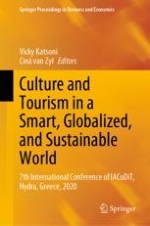2021 | OriginalPaper | Chapter
Enhancing Revisit Intention Through Emotions and Place Identity: A Case of the Local Theme Restaurant
Authors : Alexander M. Pakhalov, Liliya M. Dosaykina
Published in: Culture and Tourism in a Smart, Globalized, and Sustainable World
Publisher: Springer International Publishing
Activate our intelligent search to find suitable subject content or patents.
Select sections of text to find matching patents with Artificial Intelligence. powered by
Select sections of text to find additional relevant content using AI-assisted search. powered by
